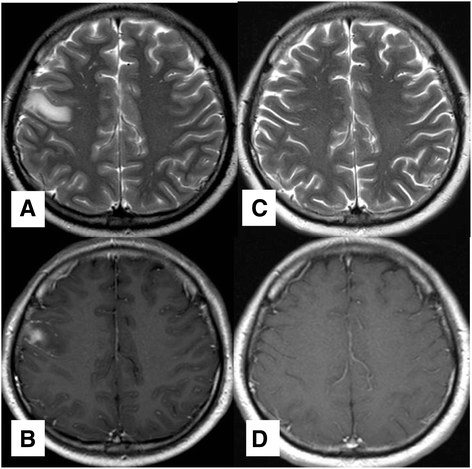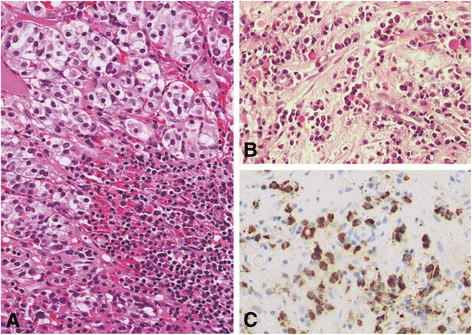Clinical course of IgG4-related hypophysitis presenting with focal seizure and relapsing lymphocytic hypophysitis
- PMID: 26510826
- PMCID: PMC4625849
- DOI: 10.1186/s12902-015-0062-x
Clinical course of IgG4-related hypophysitis presenting with focal seizure and relapsing lymphocytic hypophysitis
Abstract
Background: This is the first case report of focal seizure as a manifestation of Immunoglobulin G4 (IgG4)-related hypophysitis. IgG4-related hypophysitis is a novel category of hypophysitis. The clinical presentations, imaging studies and initial pathology studies can mimic lymphocytic hypophysitis. Here we report additional clinical clues in differentiating these two conditions.
Case presentation: A 43-year-old Thai male presented with focal seizure, headache, and anterior pituitary hypofunction. His MRI study showed typical hypophysitis lesion with abnormal cerebral parenchymal signal intensity at right frontal lobe. The pituitary biopsied was obtained and the patient was initially diagnosed with lymphocytic hypophysitis. Following initial low-dose steroid therapy, his seizure and headache resolved but his anterior pituitary hormones remained deficient. However, during steroid tapering, he developed new onset acute visual loss. Upon rigorous pathologic review, his diagnosis of IgG4-related hypophysitis with suspected CNS involvement was established. He was subsequently treated with high-dose steroid and rapidly regained his sight.
Conclusion: This case report highlights the important distinguishing features of IgG4-related hypophysitis from lymphocytic hypophysitis. These include the relapsing clinical course of hypophysitis after steroid decrement and concomitant pachymeningitis particularly in middle-aged to elderly Asian male who presented with hypophysitis. With appropriate dosage of steroids, medical treatment is usually sufficient to control the disease and surgical interventions are usually not required.
Figures



References
-
- Bando H, Iguchi G, Fukuoka H, Taniguchi M, Kawano S, Saitoh M, et al. A diagnostic pitfall in IgG4-related hypophysitis: infiltration of IgG4-positive cells in the pituitary of granulomatosis with polyangiitis. Pituitary. 2015. - PubMed
Publication types
MeSH terms
Substances
LinkOut - more resources
Full Text Sources
Other Literature Sources
Medical

